Childhood Acute Kidney Injury
In childhood, acute kidney injury can make it difficult for the kidneys to function properly, leading to the retention of metabolic waste products and an imbalance in the management of body fluids. Find out how to address the challenges of kidney health in children and how to prevent complications at their most vital stage.
Acute kidney injury is an increasingly frequent complication in hospitalized children, especially in those who are in a critical state of health. In childhood, this condition can present abruptly and is characterized by a rapid decline in kidney function, leading to reduced waste elimination, an imbalance in electrolytes and acid-base balance, and a disturbance in fluid regulation. Compared to the overall incidence of pediatric admissions, which is 0.39%, acute kidney injury has a high incidence rate of acute renal failure, ranging from 18% to 52%. From infections to the use of nephrotoxic drugs and diseases that directly affect the kidneys, the causes of this condition can be diverse. Detecting early symptoms, such as the presence of blood in the urine, fluid retention, and decreased urine volume, is crucial for prompt diagnosis and treatment. Learn more about how to approach acute kidney injury in children and ensure a better prognosis at their most vital stage.

What you can read in this content:
Is it possible to reverse chronic kidney injury or recover kidney function with natural treatments?
Acute kidney injury in children, as in adults, is the inability of the kidneys to adequately perform their function, which leads to decreased filtering capacity, retention of metabolic waste products, and an imbalance in the management of bodily fluids. It usually occurs suddenly and is established in a period of less than a week.
Is acute kidney injury a serious disease?
The severity of this condition is determined by the extent of kidney damage, and it is classified into three stages of severity depending on the magnitude of the elevation of serum creatinine and the decrease in urinary output. Other factors that determine the severity are the reversible potential or not of the pathology that gives rise to the alteration in renal function, and the presence of other associated diseases.
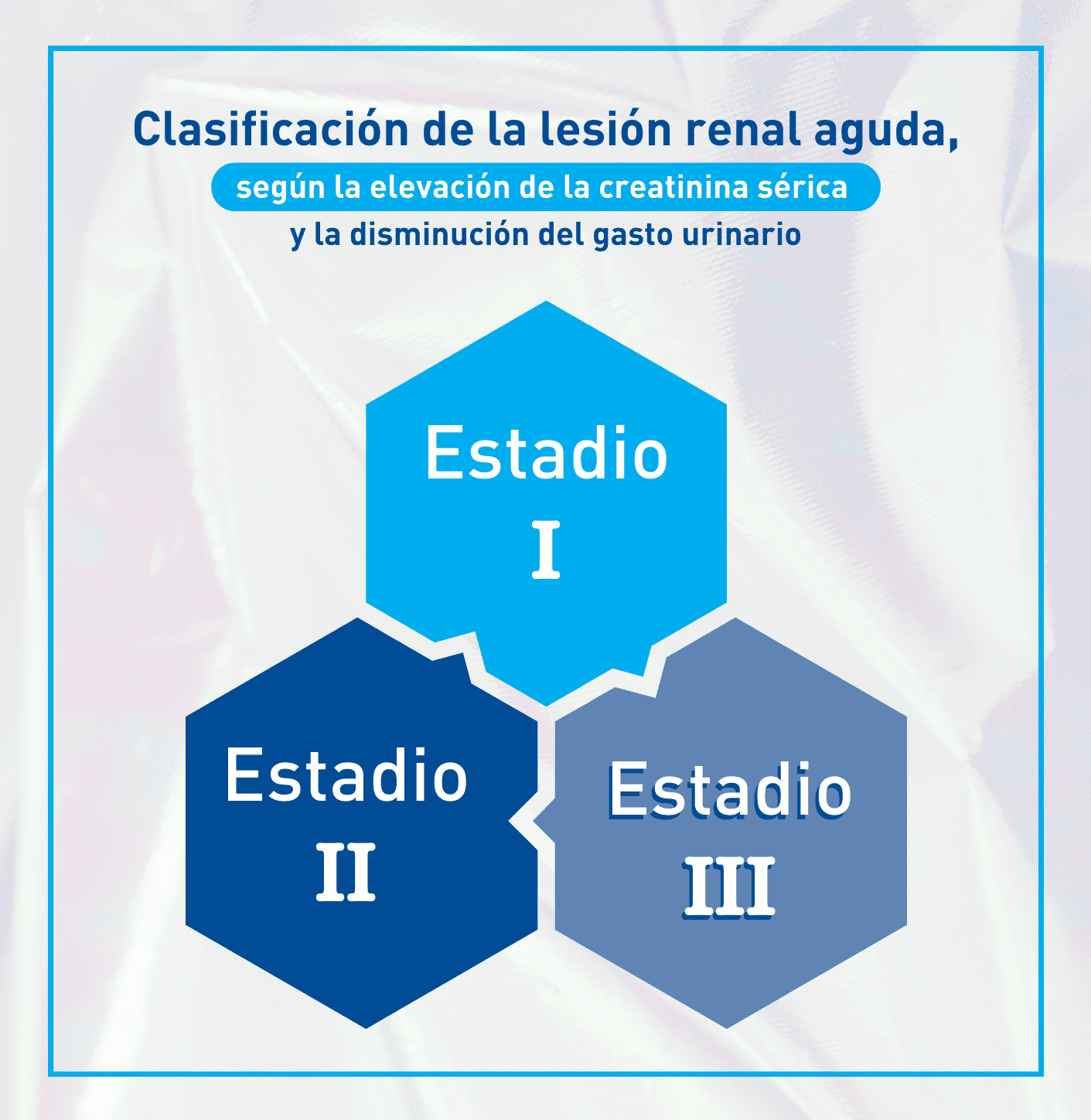
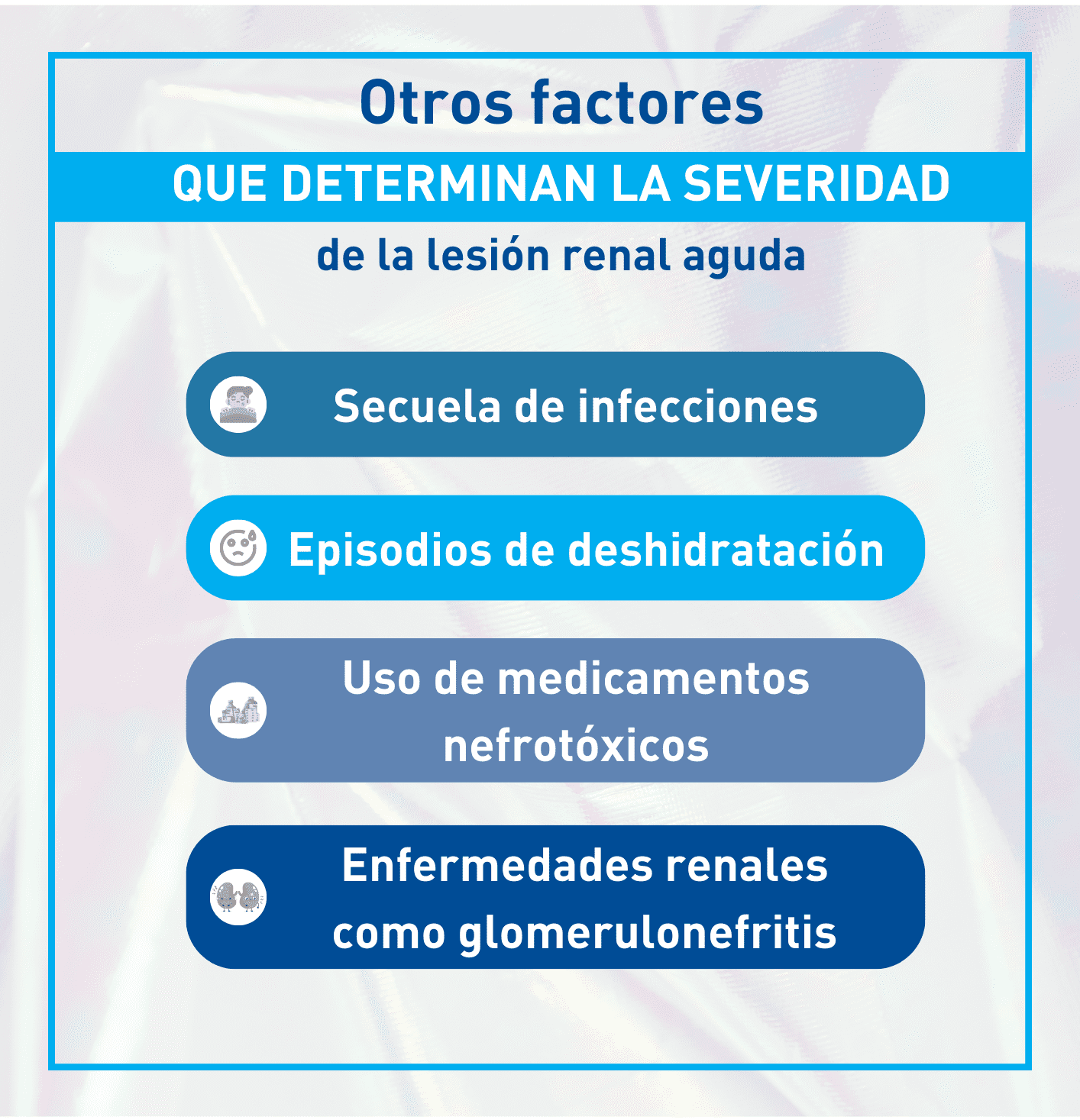
What are the causes of acute renal failure in children?
Acute kidney injury occurs more frequently in hospitalized children, about 30% of children admitted to critical care units have some degree of renal function impairment. Acute kidney injury that occurs in children outside the hospital usually occurs as a consequence of infections, episodes of dehydration, use of nephrotoxic drugs, and diseases that directly affect the kidney, such as some glomerulonephritis.
How is acute kidney injury detected?
The clinical manifestations of some pediatric diseases can help to establish whether there is an increased risk of developing acute kidney injury. There may be a history of fluid loss (diarrheal disease, bleeding), circulatory disturbances (serious infections, heart disease), or a history of recent use of drugs with nephrotoxic potential (especially non-steroidal anti-inflammatory drugs). The presence of blood in the urine, fluid retention and decreased urinary volume may be indicators of some ongoing renal process.
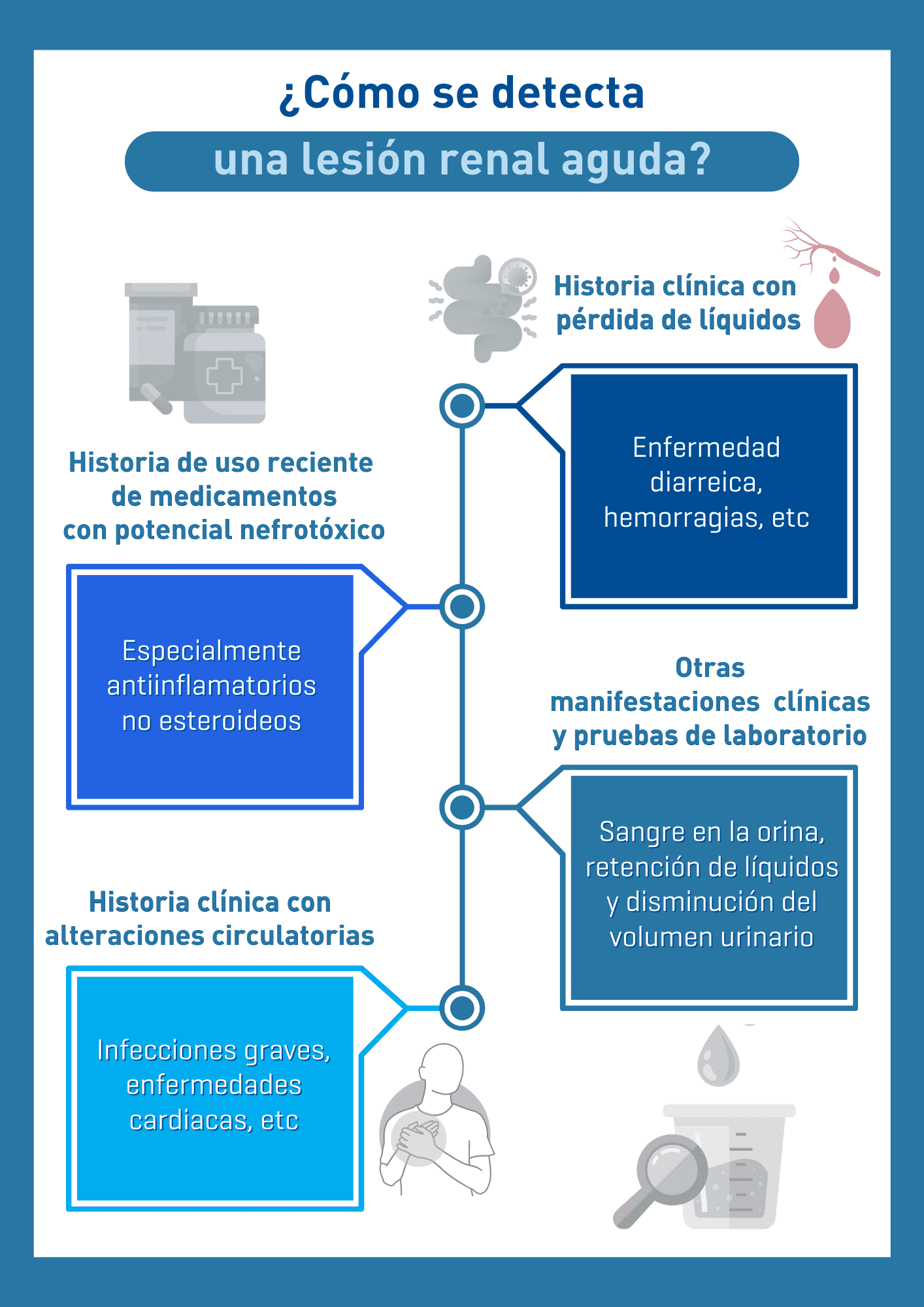
What is the treatment for acute kidney injury?
The first step in the treatment of acute kidney injury is to discontinue the use of any drugs with nephrotoxic potential, and to ensure adequate blood flow to the kidneys (with the use of intravenous fluid solutions, drugs that improve circulation, or even transfusions in cases of massive bleeding). In some cases it may be necessary to use diuretics to improve urine production, in addition to some nutritional adjustments and medications that help mitigate metabolic complications associated with the accumulation of toxins. In the most severe cases, the use of dialysis therapies, such as hemodialysis or peritoneal dialysis, may be necessary.
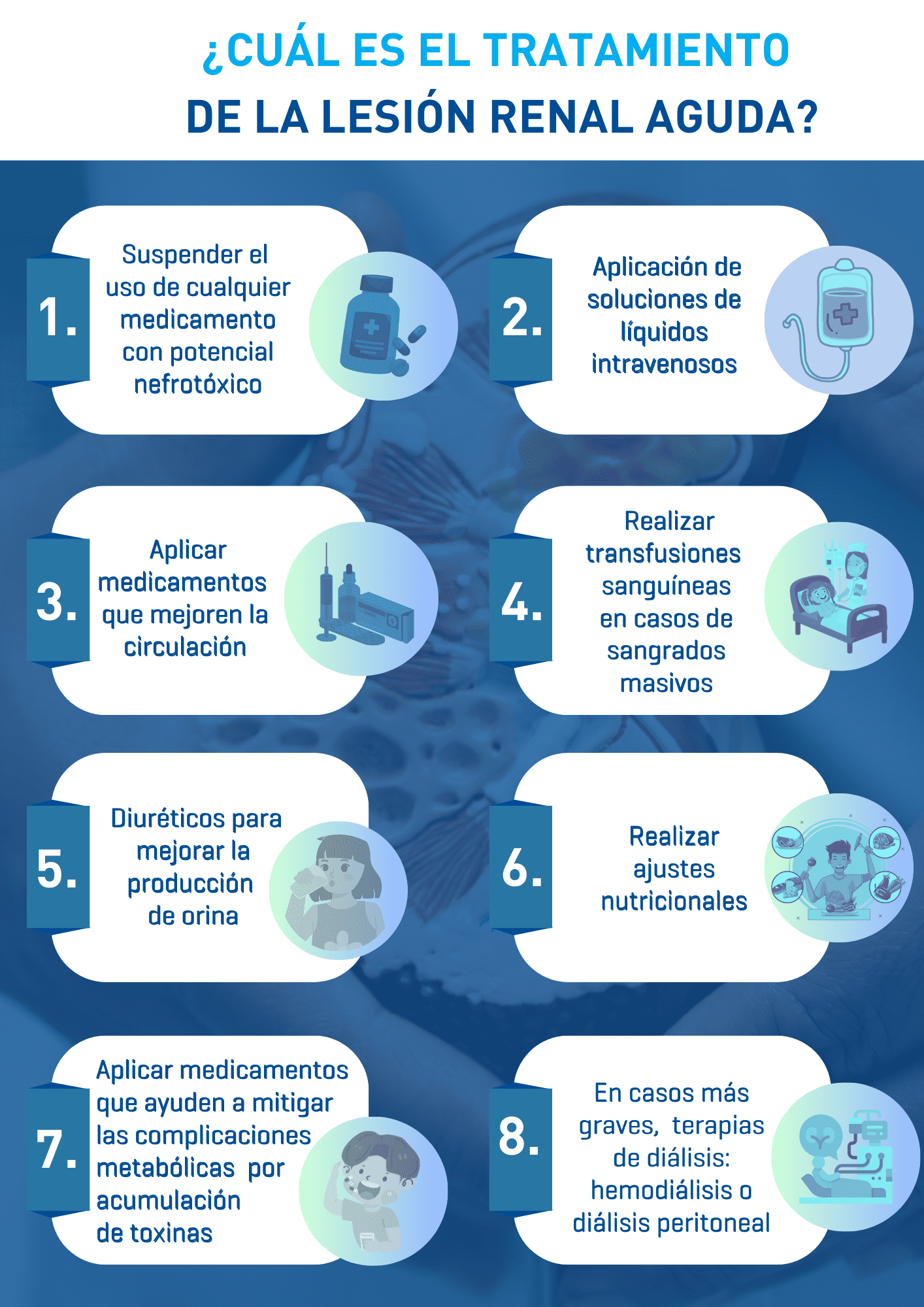
Does acute kidney injury have long-term consequences?
Transient episodes lasting less than 48 hours usually have positive outcomes, while episodes that last for more than a week have a worse prognosis, with some degree of kidney damage that may persist over time. Medium- and long-term follow-up in children after an episode of acute kidney injury is very important, in order to promptly detect alterations that increase the risk of progression to chronic kidney injury.
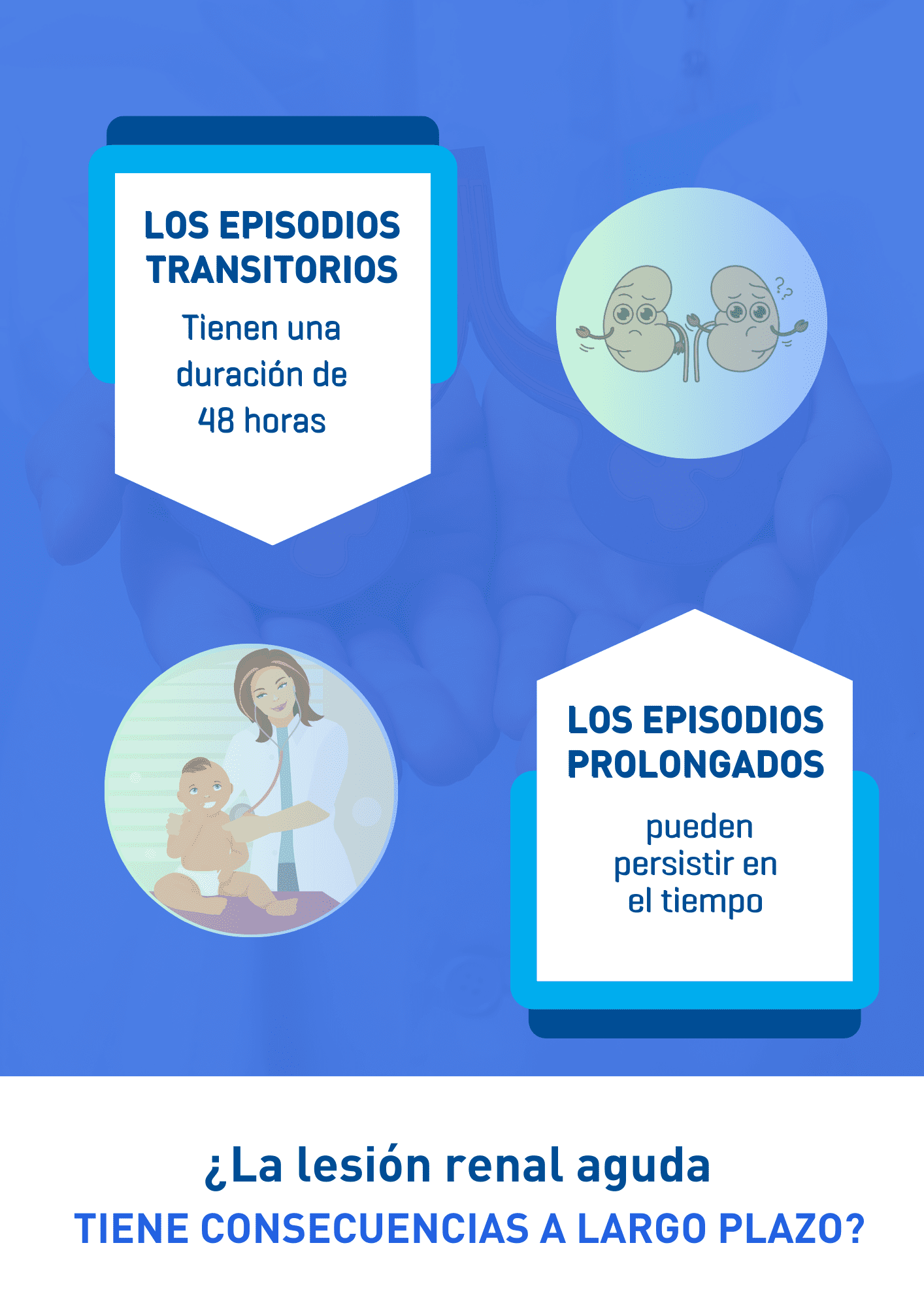
conclusions
- Acute kidney injury in children leads to decreased filtering capacity, retention of metabolic waste products, and imbalance in body fluid management. The severity of this condition is determined by the extent of kidney damage and is classified into three stages of severity.
- The clinical manifestations of some pediatric diseases can help establish whether there is a risk of developing acute kidney injury.
- Treatment of acute kidney injury involves stopping the use of nephrotoxic drugs, ensuring adequate blood flow to the kidneys, and in some cases the use of diuretics or dialysis therapies may be necessary.
- Transient episodes of acute kidney injury have positive outcomes, while episodes that last for more than a week have a poorer prognosis, with some degree of kidney damage that may persist over time.
- Medium- and long-term follow-up in children after an episode of acute kidney injury is very important to promptly detect changes that increase the risk of progression to chronic kidney injury.
Bibliography
- KDIGO AKI Work Group. KDIGO clinical practice guideline for acute kidney injury. Kidney Int Suppl. 2012; 17:1–138.
- Menon S, Symons JM, Selewski DT. Acute Kidney Injury. Pediatr Rev. 2023; 44(5): 265-279.



